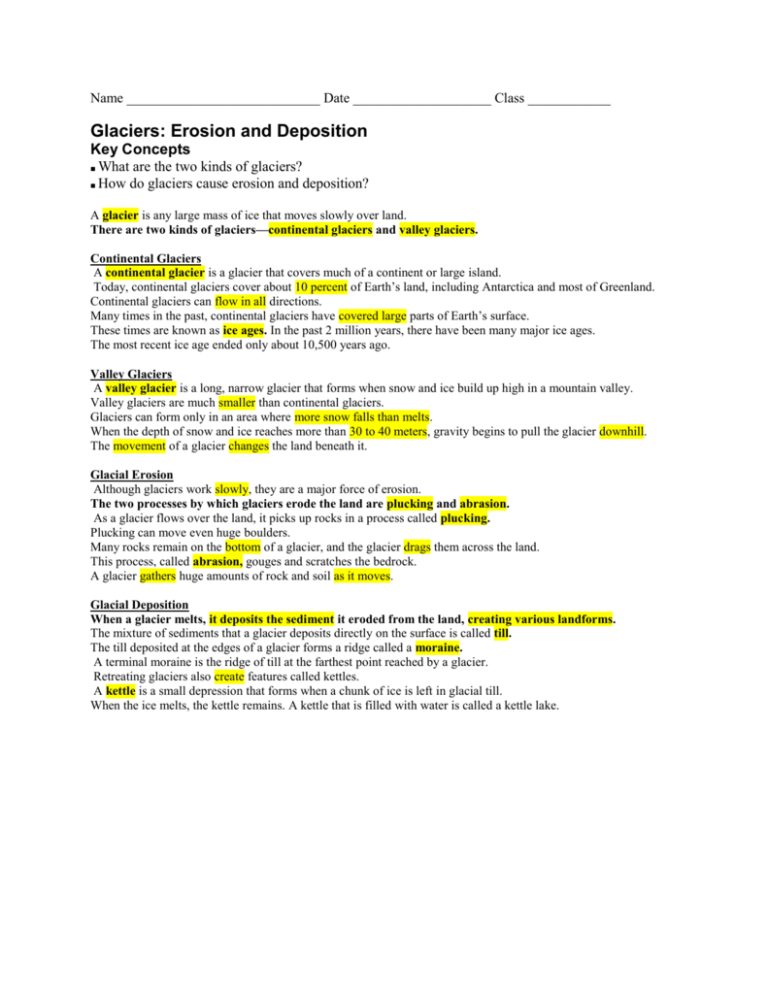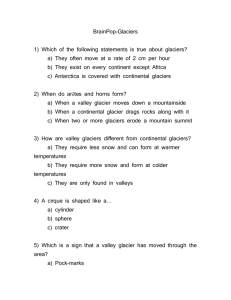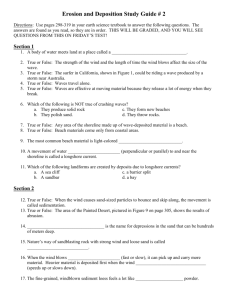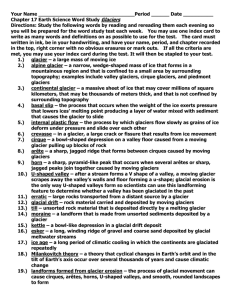GlacierErosionNotesparent
advertisement

Name ____________________________ Date ____________________ Class ____________ Erosion and Deposition Glaciers: Erosion and Deposition Key Concepts ■ What are the two kinds of glaciers? ■ How do glaciers cause erosion and deposition? A glacier is any large mass of ice that moves slowly over land. There are two kinds of glaciers—continental glaciers and valley glaciers. Continental Glaciers A continental glacier is a glacier that covers much of a continent or large island. Today, continental glaciers cover about 10 percent of Earth’s land, including Antarctica and most of Greenland. Continental glaciers can flow in all directions. Many times in the past, continental glaciers have covered large parts of Earth’s surface. These times are known as ice ages. In the past 2 million years, there have been many major ice ages. The most recent ice age ended only about 10,500 years ago. Valley Glaciers A valley glacier is a long, narrow glacier that forms when snow and ice build up high in a mountain valley. Valley glaciers are much smaller than continental glaciers. Glaciers can form only in an area where more snow falls than melts. When the depth of snow and ice reaches more than 30 to 40 meters, gravity begins to pull the glacier downhill. The movement of a glacier changes the land beneath it. Glacial Erosion Although glaciers work slowly, they are a major force of erosion. The two processes by which glaciers erode the land are plucking and abrasion. As a glacier flows over the land, it picks up rocks in a process called plucking. Plucking can move even huge boulders. Many rocks remain on the bottom of a glacier, and the glacier drags them across the land. This process, called abrasion, gouges and scratches the bedrock. A glacier gathers huge amounts of rock and soil as it moves. Glacial Deposition When a glacier melts, it deposits the sediment it eroded from the land, creating various landforms. The mixture of sediments that a glacier deposits directly on the surface is called till. The till deposited at the edges of a glacier forms a ridge called a moraine. A terminal moraine is the ridge of till at the farthest point reached by a glacier. Retreating glaciers also create features called kettles. A kettle is a small depression that forms when a chunk of ice is left in glacial till. When the ice melts, the kettle remains. A kettle that is filled with water is called a kettle lake.








